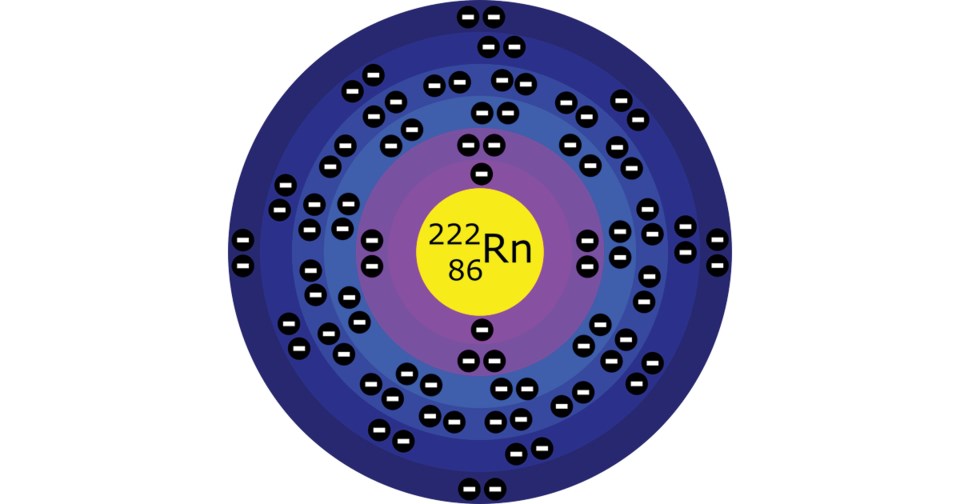People are being encouraged to be mindful about radon ÔÇö an invisible radioactive gas produced by the breakdown of uranium in the ground.
It is found in almost every home in the country, and in small concentrations, is not a cause for concern. But in larger concentrations, it can be dangerous, as it is the second leading cause of lung cancer after smoking, and the leading cause of lung cancer for non-smokers.
According to Health Canada, you cannot see, smell or taste radon, and it can get into your home undetected.
When radon escapes from the ground into the outdoor air it is diluted to low concentrations and is no cause for concern. However, when radon enters an enclosed space, like a home, it can accumulate to high levels and become a health hazard.
Frank Kirkpatrick from Master Radon said Saskatchewan is a leading location for radon.
ÔÇťThe southern Prairies as a whole are very hot for radon,ÔÇŁ said Kirkpatrick. ÔÇťSo people need to test their homes. And testing homes is very simple.ÔÇŁ
ItÔÇÖs not known why the radon levels are so high in the Prairies, but there are lots of theories.
There are two options for testing a house for radon: one is to purchase a do-it-yourself long-term radon test kit and the other is to hire a certified radon measurement professional.
Kirkpatrick said the kits are very simple and can be purchased from the Saskatchewan Lung Association.
ÔÇťThey will mail to you, you just put it in your home for three months, test your house,ÔÇŁ said Kirkpatrick.
Everyone has to test their own house, and you canÔÇÖt predict radon levels.
ÔÇťYou can have two houses side by side. One will have it, and one wonÔÇÖt,ÔÇŁ he said. ÔÇťEvery house has to be tested. We do know that on average in Saskatchewan, one out of every four houses is testing higher than Health Canada recommended risk levels.ÔÇŁ
According to information from Health Canada, you should fix your home if your radon level is higher than the Canadian Guideline of 200 becquerels per metre cubed (bq/m3).
ÔÇťThese radon molecules, when they decay away, give off alpha rays. Alpha rays are what damages cells in your lungs, and thatÔÇÖs where the problem comes from,ÔÇŁ said Kirkpatrick.
Mitigating radon levels involves intercepting radon gas from the soil using depressurization, and then with a fan, directing it to the atmosphere. Some ways are simple and others are not, depending on how the house is built.
ÔÇťWhen we come to fix a house, we do the diagnostics on the house and figure out where the hotspots are for radon, where the primary radon problem is coming from, and then we come with a plan as to how to fix that house. Once we fix the house, we do follow-up testing to make sure the home has been repaired properly.ÔÇŁ
Most houses can be completed in one day, and Master Radon does a good job of respecting the home and the homeowner. A crawlspace may require extra time.
ÔÇťCrawlspaces often have exposed soil in them, and of course the radon is coming right out of the soil,ÔÇŁ he said.
People often feel a tremendous sense of relief knowing itÔÇÖs not a problem any longer, he said.
Health Canada says radon levels in most homes can be reduced by more than 80 per cent for about the same cost as other common home repairs such as replacing the furnace or air conditioner.
Not everyone exposed to radon will develop lung cancer, and the time between exposure and the onset of disease can take many years.




